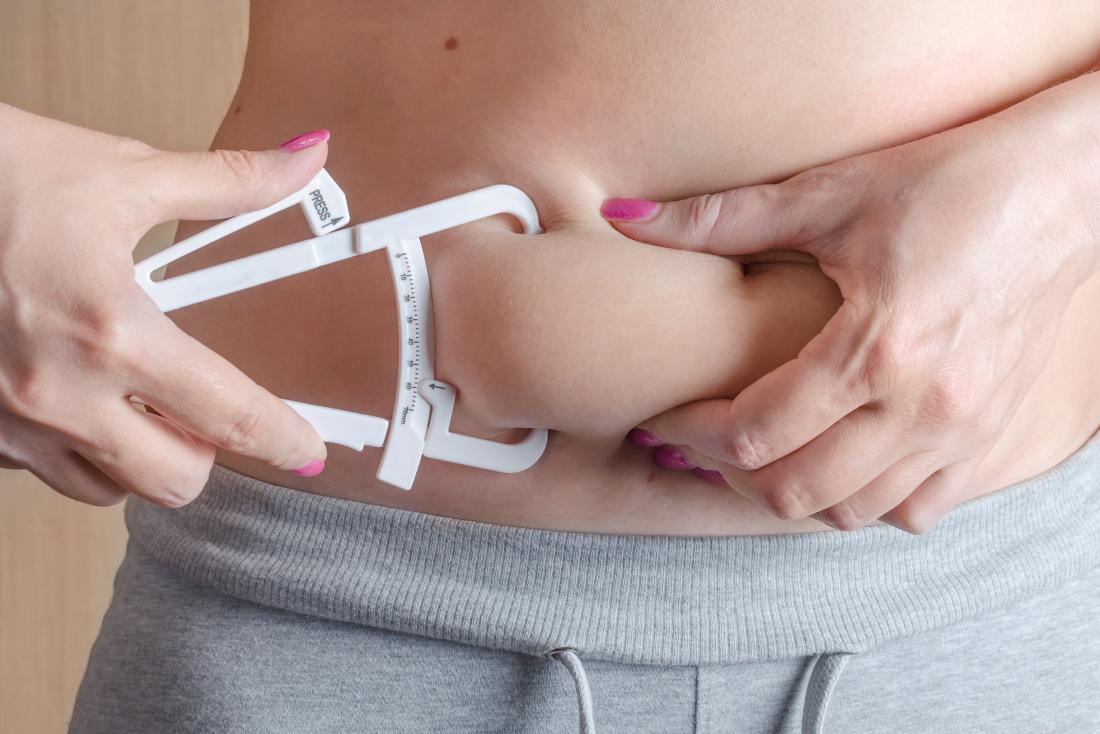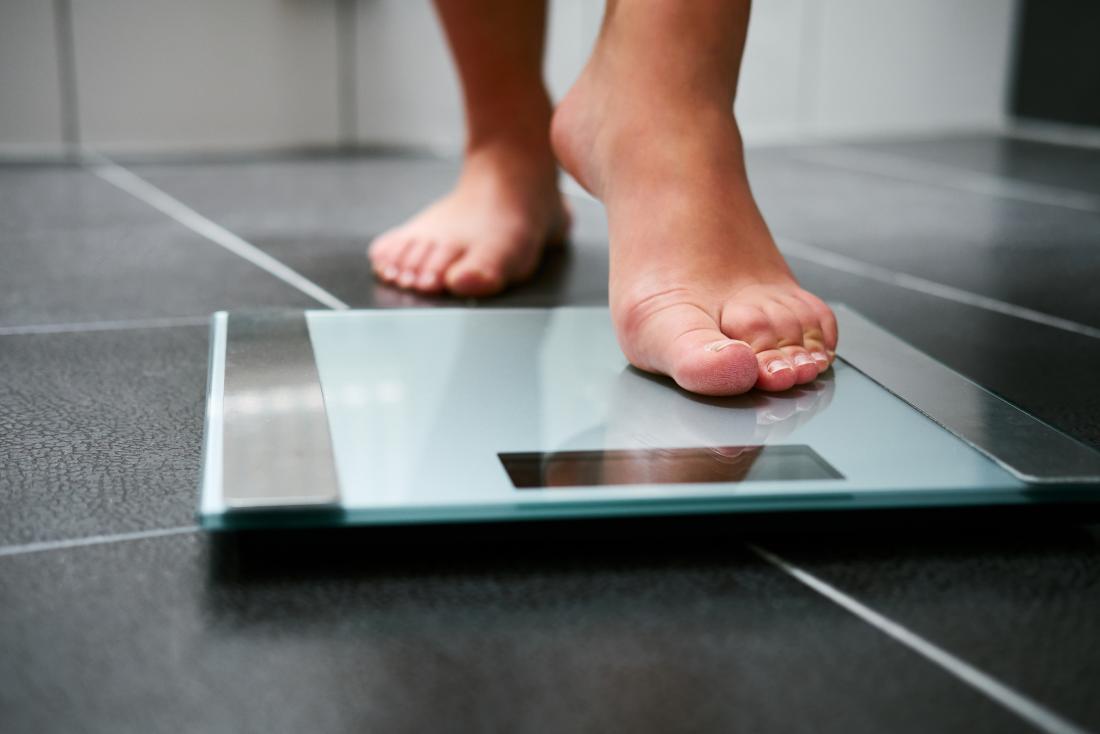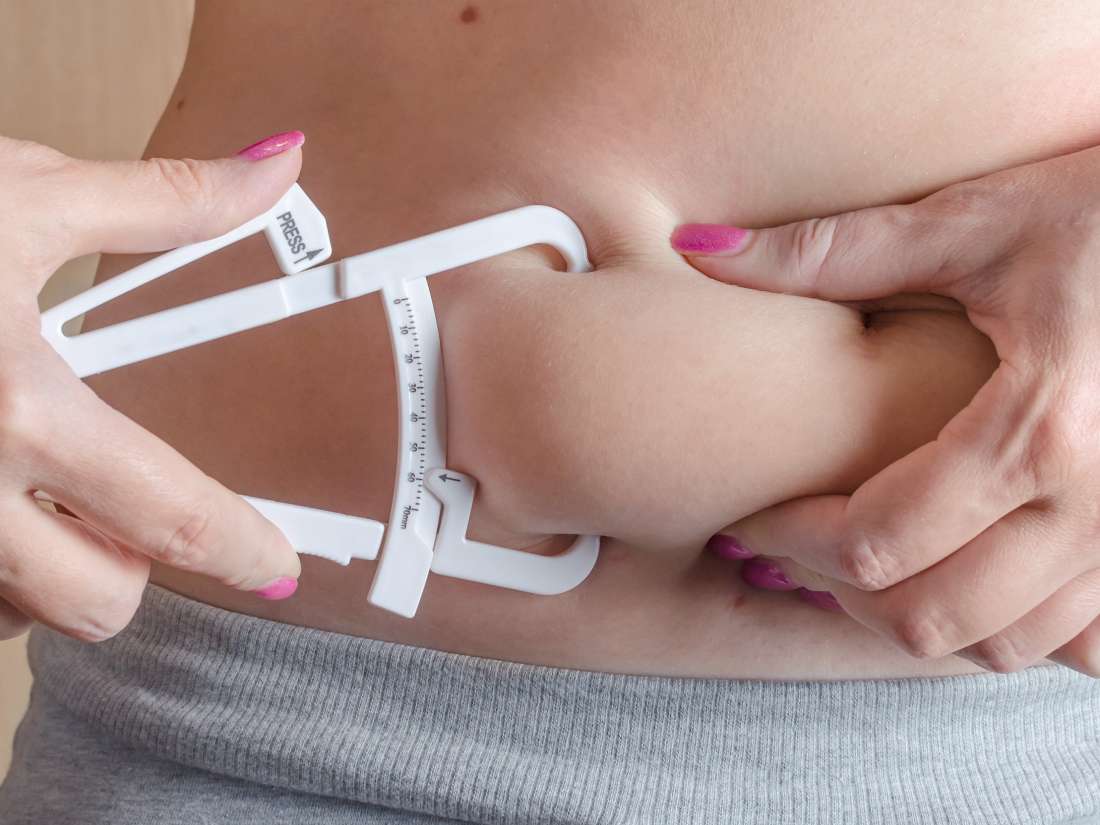However, too much body fat can lead to obesity and other chronic diseases, such as type 2 diabetes and heart disease.
The conventional body mass index (BMI) only measures total body weight, without taking body fat and muscle mass into account. A very muscular person, for example, may have a low percentage of body fat but a high BMI.
Read on to discover seven methods for accurately measuring body fat.
Skinfold measurements

A person can estimate their body fat percentage by measuring the thickness of skinfolds in different areas of the body.
The body stores a large amount of fat directly beneath the skin. Measuring the thickness of skinfolds in different areas of the body can help a person estimate their body fat percentage.
According to the American Council on Exercise, this method provides fairly accurate results.
It requires a person to use calipers to measure the thickness of skinfolds. Due to differences in body fat distribution, males and females need to take measurements in different areas.
Males should measure skinfolds on the chest, thigh, and abdomen. Females should measure skinfolds on the triceps, thigh, and just above the hip bone. It is important for people to take the measurements at the same sites each time.
People can then enter these measurements into an online calculator, which estimates body fat percentage.
It is important to note that skinfold measurements vary widely, and body fat distribution can differ, based on race, age, sex, and physical activity.
Circumference measurements
A person can easily estimate their body fat percentage by measuring the circumference of different parts of their body. They should use a tape measure to do this.
To get a more accurate estimation, measure the circumference of the neck and waist. Females should also measure the circumference of the hips.
Take measurements at the widest point, and ensure that the tape measure does not compress the skin.
The United States Army use an equation that incorporates a person’s height and circumference measurements to estimate body fat percentage.
Body fat scales

There are a number of bathroom scales available that can estimate body fat percentage.
Some bathroom scales estimate body fat percentage. They use a method called bioelectrical impedance analysis (BIA).
BIA involves passing a very weak electrical current through the body to measure its resistance to the current.
Body fat is particularly resistant, meaning that it conducts electricity less effectively than other tissues and substances within the body. Therefore, measurements that show a greater resistance indicate a higher body fat mass.
Scales can use this measurement and information about gender, age, and height to estimate body fat percentage.
According to a 2016 study, BIA can give a reasonable estimate of body fat percentage. However, it is not the most accurate method available.
Also, scales from different manufacturers may give different results.
Dual-energy X-ray absorptiometry (DEXA)
A DEXA scan uses X-rays to precisely measure body fat, lean muscle, and mineral composition in different parts of the body.
The scan is similar to any X-ray and only takes a few minutes. The amount of radiation that the scan emits is low.
Typically, researchers use DEXA scans to measure body fat percentage in research settings. The test is not readily available to the general public.
There are no specific guidelines about who should undergo DEXA scanning for body fat analysis. However, researchers suggest that the scans may help with treatment for the following groups:
- people who are obese
- people who have had bariatric surgery
- people undergoing therapy for HIV
- people who have sarcopenia, a condition that causes loss of muscle mass and strength
Hydrodensitometry
Hydrodensitometry, or underwater weighing, uses a person’s body mass and volume to calculate their body density. This helps with assessing body fat composition.
In order to determine body density, a person must divide body weight, or mass, by body volume. The volume of an object is how much space it takes up.
Hydrodensitometry involves submerging a person in water and measuring the volume of water that they displace. This displacement indicates body volume.
Following hydrodensitometry, a person can use body mass and volume measurements to calculate body density with an equation. A further equation converts body density into body fat percentage.
Hydrodensitometry is usually only available at medical centers and research institutions.
Air displacement plethysmography
Air displacement plethysmography (ADP) is another method that uses a person’s body mass and volume to calculate their body fat composition.
During ADP, a person sits inside an enclosed device called a Bod Pod. Scales inside the Bod Pod measure body mass, while air pressure sensors measure the amount of air displaced by the person. The volume of air displaced indicates body volume.
The person’s body mass and volume are used to calculate their body density, and the three measurements are used to determine the body fat percentage.
The entire procedure takes around 10 minutes and gives consistent results.
3D body scanner
A 3D body scanner uses lasers to create a 3D image of the body. The scanner rotates to take pictures of the body from different angles, and the scan is quick, taking only a few seconds. A computer then combines the individual pictures to form the 3D image.
With this image, it is possible to determine body volume. Dividing body mass by body volume can indicate body density. Then, the computer uses a separate equation to estimate the person’s body fat percentage.
3D body scanners are a portable, quick, and inexpensive way to measure body fat.
Healthy ranges
Below are body fat ranges for males and females, according to the American College of Sports Medicine:
Male
| Age (years) | |||||
| Fitness category | 20–29 | 30–39 | 40–49 | 50–59 | 60+ |
| Essential fat | 2–5 | 2–5 | 2–5 | 2–5 | 2–5 |
| Excellent | 7.1–9.3 | 11.3–13.8 | 13.6–16.2 | 15.3–17.8 | 15.3–18.3 |
| Good | 9.4–14 | 13.9–17.4 | 16.3–19.5 | 17.9–21.2 | 18.4–21.9 |
| Average | 14.1–17.5 | 17.5–20.4 | 19.6–22.4 | 21.3–24 | 22–25 |
| Below average | 17.4–22.5 | 20.5–24.1 | 22.5–26 | 24.1–27.4 | 25–28.4 |
| Poor | >22.4 | >24.2 | >26.1 | >27.5 | >28.5 |
Female
| Age (years) | |||||
| Fitness category | 20–29 | 30–39 | 40–49 | 50–59 | 60+ |
| Essential fat | 10–13 | 10–13 | 10–13 | 10–13 | 10–13 |
| Excellent | 14.5–17 | 15.5–17.9 | 18.5–21.2 | 21.6–24.9 | 21.1–25 |
| Good | 17.1–20.5 | 18–21.5 | 21.3–24.8 | 25–28.4 | 25.1–29.2 |
| Average | 20.6–23.6 | 21.6–24.8 | 24.9–28 | 28.5–31.5 | 29.3–32.4 |
| Below average | 23.7–27.6 | 24.9–29.2 | 28.1–32 | 31.6–35.5 | 32.5–36.5 |
| Poor | >27.7 | >29.3 | >32.1 | >35.6 | >36.6 |
Summary
There are various ways to accurately measure body fat percentage. Some methods are simple and inexpensive, while others are more complicated and costly.
Some of these methods, including DEXA scans, hydrodensitometry, and ADP, are only available at specialized facilities.
However, a person can estimate their body fat composition at home by other means. A doctor or personal trainer can offer additional advice on taking accurate body measurements.
